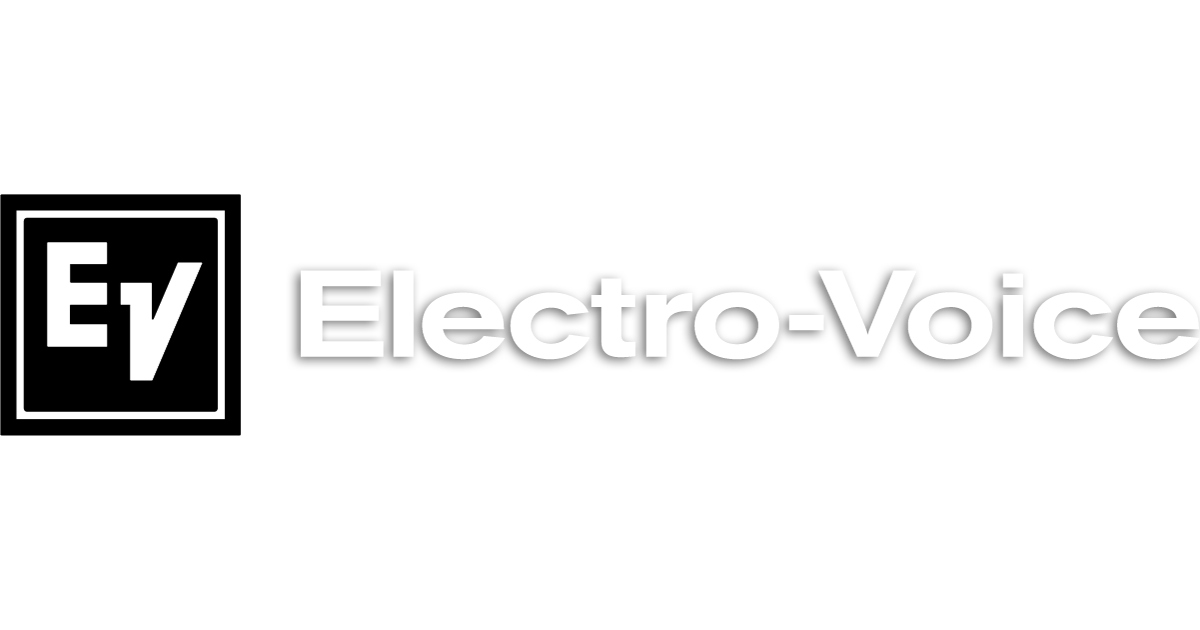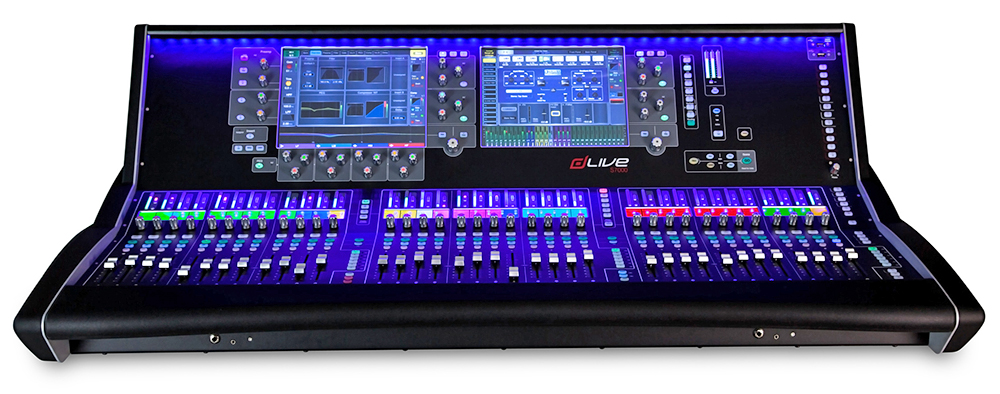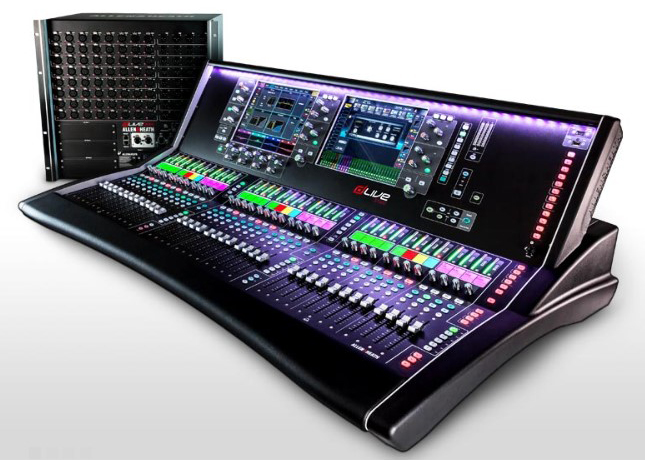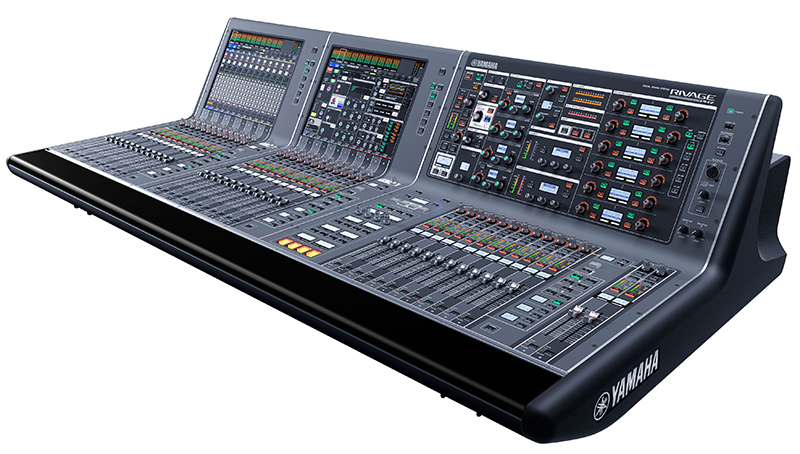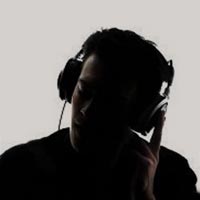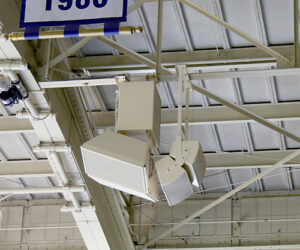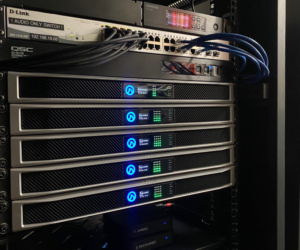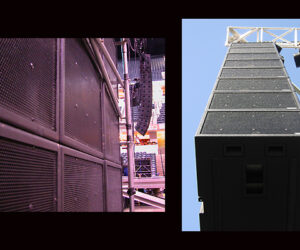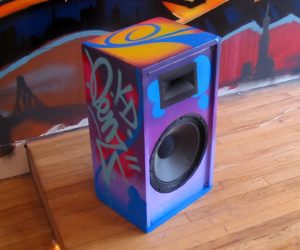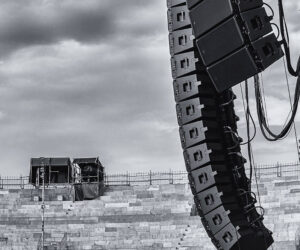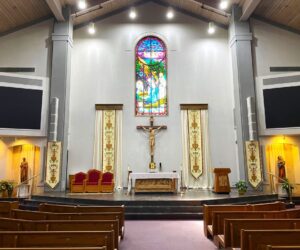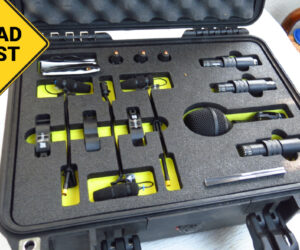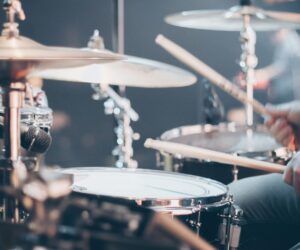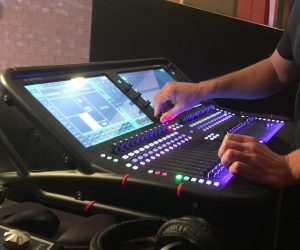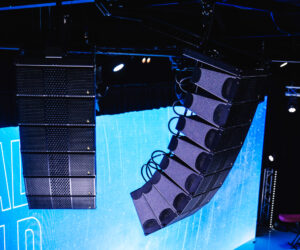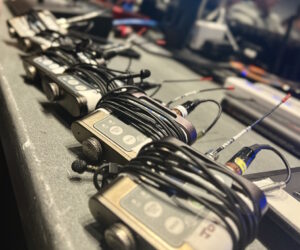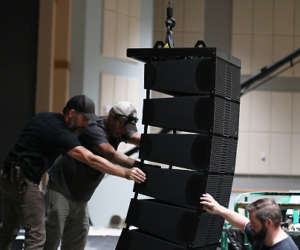When we talk of “large frame” consoles, older analog units with channel counts of 40 inputs or more come to mind because they actually had very large frames loaded with channel strips. In today’s digital world, however, we’re usually referring to a console that can professionally handle a large production, even if physically it’s not all that sizeable, because most use layers of fader banks to access additional channels and functions like aux sends on faders.
It’s not uncommon to see newer digital models measuring only a few feet in width that can handle 40 or more channels, where in the analog world a 40-input console might be six or more feet wide. Digital consoles have also eliminated the need to carry heavy racks loaded with outboard gear like EQs and effects.
Most digital consoles can operate on a network, allowing multiple channels to travel down a small Ethernet, coax or fiber optic cable. Inputs and outputs can be located remotely in stage boxes that are easily linked via lighter cable, eliminating the need for heavy copper analog snakes. In addition, multiple audio devices such as additional consoles and recording units also have easy access to the network.
My company also utilizes networked computers for live multitrack recording, archival recordings, and virtual sound check. Coupled with the full recall capability of digital consoles, virtual sound check insures that mix engineers don’t have to start from scratch at every gig with the same band, and can “dial in” the band before they even arrive at the venue.
Another feature many digital consoles now provide is offline editing, which is the ability to set up and configure the console for a specific act, load the showfile on a thumb drive, and then transfer the settings at a later time to a console. This has been a boon for touring folks can have multiple showfiles for different consoles, and when they get to the venue, simply upload their parameters into the given console without having to spend time labeling, adjust and configuring parameters at every tour stop.
My favorite digital console capability is remote access via tablets and laptops. Many models allow engineers to connect via Wi-Fi to remotely control a variety of parameters, allowing them to step away and listen to/adjust the mix in different locations throughout the coverage area.
When doing the house mix, it’s great to be able to move around to hear what various sections of the audience are hearing and be able to optimize. It’s also much easier to dial in a monitor mix while standing on stage, hearing what the performers are hearing.
Following is a look at a number of recent digital consoles that deliver larger-format capability. While some are not necessarily physically imposing, all have the facilities to handle bigger, more complex events.
dLive is Allen & Heath’s flagship digital mixing system. The power of dLive emanates from the XCVI Core – pioneered by the Allen & Heath R&D team using next generation FPGA technology, with 36 parallel virtual processing cores generating enough power for 160×64 channels of processing at 96 kHz.
The massive power of XCVI allows dLive to deliver 128 full processing inputs and 16 stereo FX returns, a configurable 64 bus architecture, variable bit depth for ultimate precision and noise performance, a virtually infinite mix headroom thanks to a 96bit accumulator, and class leading latency at an ultra-low 0.7 ms.
With six Control Surfaces and seven MixRacks, support for leading audio networking protocols like Dante, MADI and Waves, plug and play ME personal monitor mixers, and array of compact remotes, I/O expanders, iPad and Android apps, and Mac and PC online/offline editor software, dLive rethinks and redefines the ultimate audio mixing system.
Key Specs, dLive S Class S7000
Faders: 36
Mix Inputs: 128
Aux/Group: Configurable 64-bus architecture
Matrix: Configurable 64-bus architecture
FX: 16 stereo | DCA: 24 | GEQ: 64
App: dLive Editor (computer) and dLive (iOS)
Screens: Two 12-inch color touch screens
Local I/O: 8 + 8 analog, 2 AES stereo inputs, 3 AES stereo outputs
Stage Boxes: DM64, DM48, DM32
Options: GiGaAce, MADI, EtherSound, Dante, Waves SoundGrid, ACE
Also: Built in RTA and Spectrogram
Physical: 52 x 29 x 16 inches, 90 pounds
Additional Models: S3000, S5000, also C Class
Yamaha RIVAGE PM7
Faders: 36 + 2
Mix Inputs: 120
Aux/Group: 60
Matrix: 24
FX: 45 types, up to 384 instances
DCA: 24
GEQ: 48
App: StageMix (iPad)
Screens: Two 15-inch touch screens
Local I/O: 8 + 8 analog XLR, 4 + 4 AES/EBU
Stage Box: RPio622, RPio222, Rio3224-D2, Rio1608-D2 MY Cards: Dante, MADI, Aviom, many others
Also: Neve inserts, TC and Eventide FX, SILK mic preamp
Physical: 61 x 33 x 17 inches, 208 pounds
DiGiCo SD12
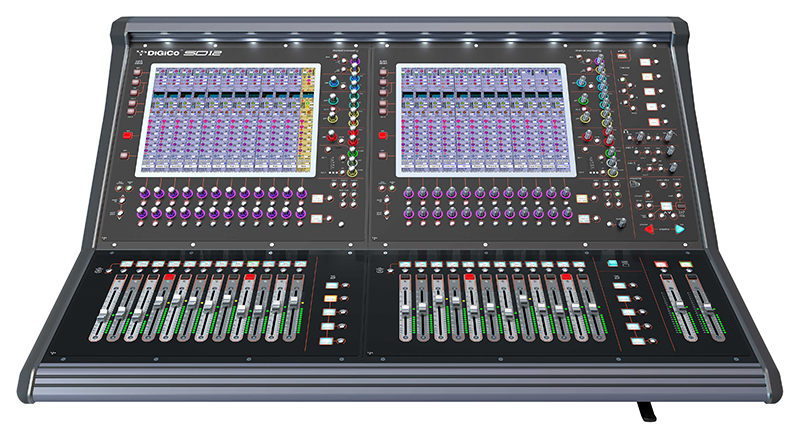
Mix Inputs: 96
Aux/Group: 48
Matrix: 12 x 8
FX: 12 stereo | DCA: 12 | GEQ: 16
Screens: Two 15-inch touch screens
App: DiGiCo SD (iPad)
Local I/O: 8 + 8 analog, 4 stereo AES/EBU, 2 MADI ports, 2 DMI card slots
Stage Boxes: SD Rack, SD-MINI, SD-NANO, D2-Rack
Options: UB MADI adapter, Waves SoundGrid, Aviom, Dante
Also: HTL (Hidden Til Lit) Technology, overview monitor output
Physical: 44.25 x 31.3 x 15.3 inches, 92.5 pounds
Additional Models In Series: SD5, SD5B, SD7, SD10
Avid VENUE S6L (S6L-32D)
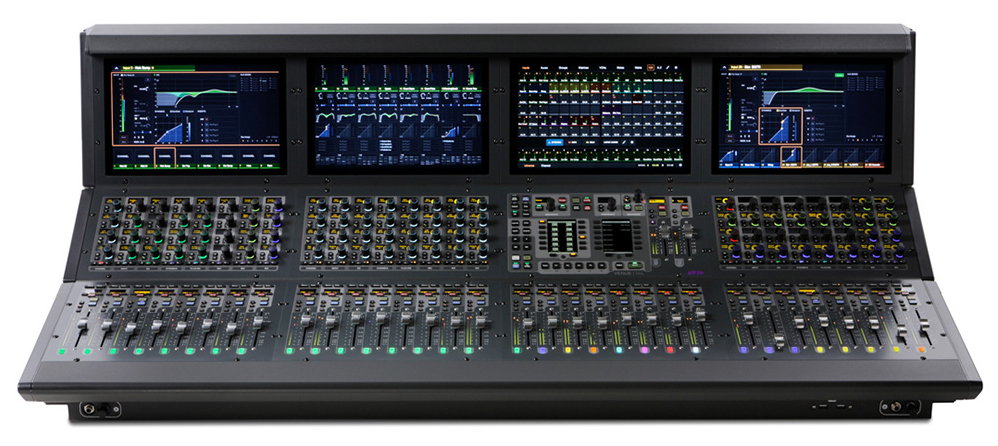
Mix Inputs: 192
Aux/Group: 96
Matrix: 24 x 24
DCA: 24
GEQ: 32
Screens: Four 12-inch touch screens
Local I/O: 8 + 8 analog XLR, 4 + 4 AES/EBU
Stage Boxes: Stage 32, Stage 64
Card Options: Ethernet AVB, Dante, MADI, Aviom, Thunderbolt
Also: Direct Waves and AAX plugins, 128 tracks of Pro Tools built in
Physical: 51 x 31 x 15 inches, 155 pounds
Additional Models: S6L-48D, S6L-24D, S6L-24C, S6L-16C
Lawo mc²56

Total Mix Paths: 760 inputs (with A/B inputs) and 888 channels
Aux/Group: Up to 144
GEQ/FX: Waves SoundGrid
DCA: 128
App: Remote Desktop (PC)
Screen: up to 5 x 21.5-inch color touchscreens
Local I/O: 16 + 16 analog XLR, 4 + 4 AES/EBU
Stage Boxes: DALLIS fully redundant I/O, mc² Compact I/O
Also: MADI port, RAVENNA/AES67 audio-over-IP, remote control of Neumann AES42 digital mics
Physical: Varies (depending on frame size) from 52.5 inches wide/225 pounds to 132.8 inches wide/471.8 pounds
Additional Models: mc² 36 (16- and 40-fader versions), mc²96
Stage Tec AURUS Platinum

Mix Inputs: 300
Aux/Group: 128
Matrix: 32 x 32
DCA: 24
GEQ: 32
Screens: Five 19-inch metering and one 10-inch touch screen
Stage Boxes: NEXUS Base Device modular frames
Also: RAVENNA networking technology, 32-bit TrueMatch A/D mic preamp conversion
Physical: 54 x 42 x 41 inches, 90 pounds
Additional Models: AURUS, CRESCENDO, CRESCENDO Platinum, AURATUS
PreSonus StudioLive 64S
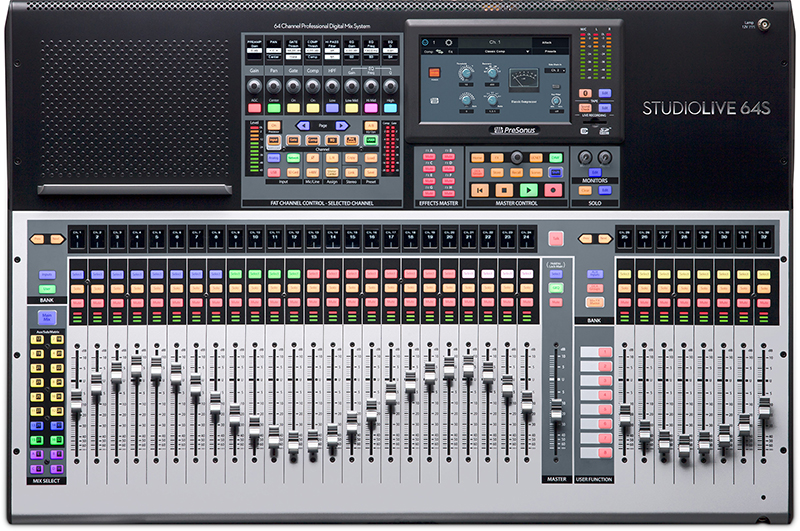
Total Mix Paths (Inputs/Aux/Group/Matrix): 64+8 inputs/32 flex mixes
FX: 8 FX FLEX buses, 8 FX FLEX returns
DCA: 24
GEQ: 16
Screens: LCD display screen
App: UC Surface for Mac, Windows, iPad and Android
Local I/O: NA
Stage Boxes: StudioLive NSB-series boxes, also integrates with EarMix 16M monitor mixers
Also: Dual A/B Fat Channel on all inputs and outputs, 64 x 64 USB audio interface
Physical: 32.4 x 23 x 6.5 inches, 37.2 pounds
Additional Models In Series: Multiple 32-channel versions
Yamaha TF5
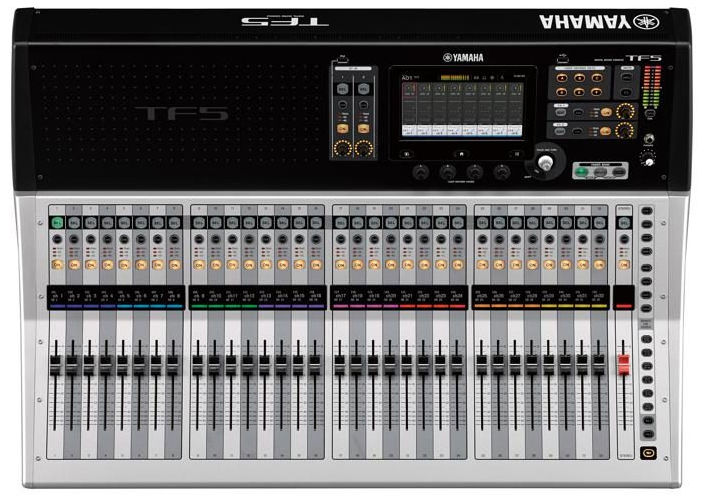
Mix Inputs: 48
Aux/Group: 20
Matrix: N/A
FX: 8
DCA: 8 | GEQ: 10
Apps: TF StageMix, MonitorMix
Screens: 1 touch screen, also facilitates “Touch & Turn” capability
Local I/O: 32 mic/line (XLR/TRS combo) + 2 stereo line (RCA pin) inputs, 16 (XLR) outputs, 1 expansion slot
Stage Boxes: Tio1608-D Dante-equipped I/O rack
Options: NY64-D Dante expansion card
Also: 34-track recording/ playback, 2-track playback via USB/SSD, Nuendo Live recording software
Physical: 34.1 x 23.6 x 8.9 inches, 44.1 pounds
Additional Models In Series: TF3, TF1
Midas PRO X

Mix Inputs: 144
Aux/Group: 72
Matrix: 24
FX: Up to 48
DCA: 10
GEQ: 36
Screens: Two 15-inch
App: MixTender 2 (iPad), PalmMix (iOS)
Local I/O: 8 + 8 analog XLR, 4 + 4 AES/EBU
Stage Boxes: DL151 through 155, DL251&252, DL351, DL451
Options: DN9650 & DN9652 MADI/Dante/CobraNet/ES bridges
Also: 3-way KVM switch
Physical: 54 x 37 x 17 inches, 213 pounds
Additional Models In Series: PRO3, PRO6, PRO9
Solid State Logic Live.L200
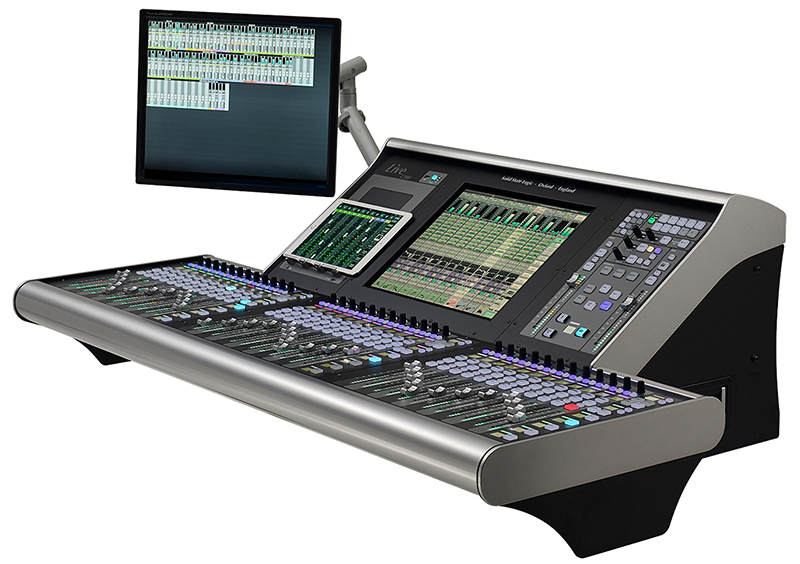
Total Mix Paths (Inputs/Aux/Stems/Masters): 144 full processing paths can be 96 inputs, plus up to 48 aux
Matrix: 4 x 32 input x 24 output
FX: up to 48 instances at one time
GEQ: 96
Screens: 17 inch multi-touch screen, optional arm mounted external screens
Local I/O: 12 + 12 analog XLR, 8 + 8 AES/EBU, 8 MADI, Blacklight II, Dante
Stage Boxes: ML 32.32, ML I.32, D 32.32
Options: MADI-Dante Bridge, Live-Recorder SSD PC
Also: Optical FX loop for Waves SoundGrid
Physical: 54 inches wide, 180 pounds
Additional Models In Series: Live.500, Live.L300
Soundcraft Vi1000
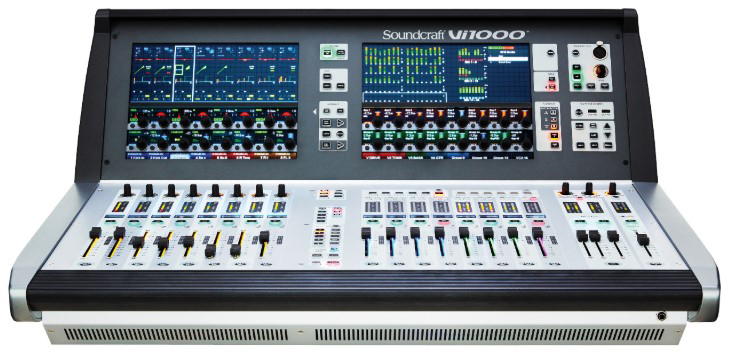
Mix Inputs: 96
Aux/Group: 24 stereo/mono
Matrix: 16 stereo/mono
FX: 4 Lexicon stereo
DCA: 16
GEQ: 24
Screens: Two 12-inch Vistonics screens
App: ViSi (iPad)
Local I/O: 16 inputs and 16 outputs, 2 stereo AES/EBU
Stage Boxes: Vi Stagebox, Compact Stagebox, Mini Stagebox
Options: Dante, MADI, EtherSound, CobraNet, ADAT, Aviom, Blu Link
Also: Dante connectivity standard, vMIX automatic mic mixing, UA real-time plugins
Physical: 33.2 x 31.6 x 13.8 inches, 55 pounds
Additional Models In Series: Vi2000, Vi3000, Vi5000, Vi7000
Cadac CDC seven-s

Mix Inputs: 128
Aux/Group/Matrix: 56
Matrix: Up to 67 x 48
FX: 16 stereo
DCA: 16
GEQ: 56
Screens: Two 24-inch and one 6-inch touch screen
App: Cadac Remote (iPad)
Local I/O: 8 XLR I/O, 4 AES/EBU I/O, 2 x Cadac MegaCOMMS
Stage Boxes: CDC I/O 6448, CDC I/O 4016, CDC I/O 3216, CDC MC AES3
Options: MC MADI bridge, MC Dante bridge
Also: Dugan Automixer post fade Insert for Waves, SAM theatrical automation software
Physical: 61 x 30 x 10 inches, 132 pounds
Additional Models In Series: CDC five, CDC six
Roland Pro AV M-5000
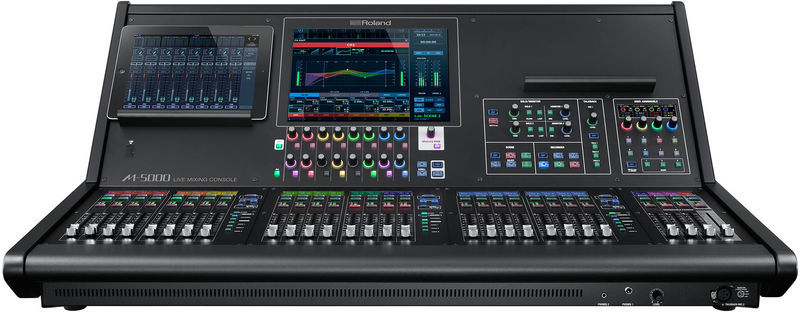
Total Mix Paths (Inputs/Aux/Group/Matrix): 128
FX: 8 stereo
DCA: 24
GEQ: 32
Screen: 12-inch touch screen
App: M-5000 Remote (iPad)
Local I/O: 16 + 16 analog XLR, 2 + 2 AES/EBU
Stage Boxes: S-4000-3208, S-2416, S-1608, S-0808
Card Options: REAC, Dante, MADI, Waves
Also: iPad dock, M-48 personal mixers
Physical: 37 x 29 x 14 inches, 79 pounds
Additional Models In Series: M-5000C
Studer Vista 5SR

Mix Inputs: 80 mono/20 stereo
Group: 8 stereo (FOH configuration)
Aux: 10 mono/10 stereo (FOH)
Matrix: 5 mono/5 stereo (FOH)
FX: 12 stereo (w/3 optional Vista FX units) | DCA: 16
Screens: Three Vistonics touch screens
App: Virtual Vista (PC)
Local I/O: 16 + 48 analog XLR, 16 + 16 AES/EBU
Stage Boxes: Compact Stagebox, D21m, D23m
Options: EtherSound, CobraNet, Dante, MADI, ADAT, Aviom
Physical: 59 x 30 x 15 inches, 149 pounds
Additional Model In Series: Vista 1

